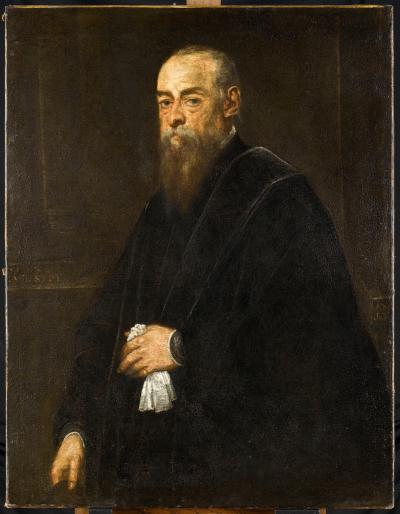PROGRAM
Important Notification
The 21th International Conference on Cultural Economics
Lille, France, July 6 – July 9, 2021
Initial Conference program 2020 (DRAFT)
Tuesday, June 30
[LILLIAD]
10:00 – 15:00 Young researchers’ workshop
16:00 – 18:00 ACEI board meeting
Wednesday, July 1
[LILLIAD]
8:00 – 9:30 Registration and coffee
9:30 – 10:00 Opening of the conference
Theme: Cultural policy
10:00 – 10:45 Keynote lecture: Professor Kate Oakley: Three crises of Cultural Policy
10:45 – 11:30 Keynote lecture: Professor David Throsby: The relevance of Cultural Economics for Cultural Policy: Can we do better?
11:30 – 12:00 Discussion, Chair: Trine Bille
12:00 – 13:00 Lunch (at campus)
13:00 – 14:30 Paper presentations in parallel sessions (1)
14:50 – 15:00 Coffee break
15:00 – 16:30 Paper presentations in parallel sessions (2)
16:30 – 18:00 Paper presentations in parallel sessions (3)
19:00 – 22:00 Welcome reception : Palais des Beaux-Arts
Thursday, July 2
[LILLIAD]
9:00 – 10:30 Paper presentations in parallel sessions (4)
10:30 - 11:00 Coffee break
11:00 – 12:00 Keynote lecture: Professor Bruno S. Frey: Cultural Overtourism
12:00 – 13:00 Lunch (at campus)
13:00 – 14:30 Paper presentations in parallel sessions (5)
14:30 – 15:00 Coffee break
[bus trip to the Louvre Lens]
Round table at the Louvre Lens (chair: Francoise Benhamou)
Conference gala dinner + exhibition (see below)
[return by bus to Lille]
Friday, July 3
[LILLIAD]
9:00 – 10:30 Paper presentations in parallel sessions (6)
10:30 - 11:00 Coffee break
11:00 – 12:00 Presidential Address. Professor Alan Collins: Joke Economics: The Low Profile of Comedy in the Economics of Art and Culture
12:00 – 13:00 Lunch (at campus)
13:00 – 14:30 Paper presentations in parallel sessions (7)
14:30 – 15:00 Coffee break
15:00 – 16:00 Concluding remarks
General Meeting of ACEI
Saturday, July 4 :
Trip to cultural institutions around Lille (to be annouced)
Can heritage contribute to the revitalization of a region?
ACEI2020
Thursday July 2, 2020
Round Table before the Gala Dinner
Chairperson
Françoise Benhamou
Guests
Lazare Eloundou Assomo
Deputy Director of the UNESCO Heritage Division
Marie Lavandier
Director of the Louvre Lens
...
Other guests to be announced
...
At the very beginning of the twenty-first century, Nature came out of the infinite and reached the narrow limits of human responsibility. It now rubs shoulders with the art, culture, techniques and industries of the past, within the main public policies at all scales: regional, national and global. Almost anything can claim a heritage status and the prospects are completely transformed. Born of old eternal forms inscribed in the great pantheons, the Heritage appears suddenly multiple, precious, fragile, durable, under conditions. Public intervention follows, accompanies or provokes all these upheavals and the regions replay their cards. As a result, Cultural heritage seems to be one of the keys to the essentials necessary for the revitalization of forgotten or bruised territories at the end of the 20th century.
date: Thursday 02 July 2020
Schedule :
15:00-16:30 Transportation Bus Lille-Lens
16:30-18:00 round table
18:00-20:00 Guided tour 'Soleil Noir' exhibition
20:00-24:00 ACEI2020 Gala Dinner
24:00-00:45 Transportation Bus Lens-Lille
25 March 2020 — 13 July 2020

PRESENTATION OF THE EXHIBITION PROJECT
Work reproduced on the first page: Jacopo ROBUSTI, known as TINTORETTO (Venice, 1518 – Venice, 1594), Portrait of an Elderly Man Holding a Handkerchief, 1570–1575, 1.14 x 0.89 m, Paris, Musée du Louvre, inv 573
“Noir” (Black) will be a poetic, sensual exhibition that will provide a unique opportunity to discover works from Antiquity, the Middle Ages, the modern period and the present day. Almost 75 years after the legendary exhibition “Le Noir est une couleur”, visitors to the Louvre-Lens will be fully immersed in this colour that is so rich in symbolism.
Is black, this paradoxical colour, the absence of light, emptiness, a joyous amalgam of all colours or a dazzling vision?
As soon as they enter the exhibition, visitors will be plunged into a familiar experience of black thanks to works on themes that have been omnipresent in art history, such as night. Although being immersed in blackness is an experience everyone will be familiar with, the colour black has been a structural but ambiguous element in representations of the sacred: it is simultaneously the colour of all beginnings, of the infinite, of the timeless and also of death and ignorance. This ambiguity was marked by fear and fascination, giving rise to that feeling of melancholy used by artists to enhance the beauty and sensuality of black in their works.
A codified colour in life and fashion, black was a social luxury in portraits of post-Renaissance Europe, a mark of elegance and the sign of a function, as much as a pleasure for the painter.
Finally, black became the emblematic colour of industrial and aesthetic modernity. It freed itself from them to the point of becoming a subject in itself, a visual substance endlessly explored and reinvented, as demonstrated by the Outrenoir of Pierre Soulages and Anish Kapoor’s Vantablack.
Exhibition organised with the exceptional support of the Musée du Louvre
Curators:
Marie Lavandier, director of the Musée du Louvre-Lens, and Juliette Guépratte, director of strategy at the Musée du Louvre-Lens

